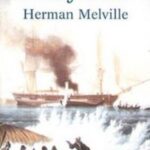Realism was a literary movement directly opposed to the previous movement of Romanticism. The Romantics believed in following one’s heart or gut to lead to life’s truths, particularly in using Nature as the catalyst. For example, Melville’s Moby Dick is an escape novel; Ishmael escapes from the confining environment of Manhattan to go to the sea aboard a whaling ship. To them, things like intuition, nature, supernatural, and were important. According to the web site us info, Romanticism concerns “the fictional exploration into the hidden recesses of the soul” (usinfo). Most of these characters were loners, like Melville’s Ishmael or Hawthorne’s Young Goodman Brown. According to vcu, “In literature it was America’s first great creative period” (vcu). Romantics strongly believe in the power of human goodness. In contrast, the Realists had too much of Romanticism. They stressed the need to belong to the “real world.” Events that occur in these stories will be plausible, unlike being visited by those from beyond the grave. The Realists portrayed subjects previously unportrayed in literature, such as slums of larger cities, the grim realities of life, the new urban poor or portraying any location realistically known as local color.. They felt the need to look at the world as it currently existed and without all the sentimentality of the Romantics. Realism may have never existed without Romanticism directly before it. Of course, Romanticism may have never existed without The Age of Reason before it. All these movements are absolutely essential for understanding the progression of not just American literature but American life in general. These were movements of literature but also movements of thought and art and everything else that was going on this country.
Mark Twain is considered a realist as is Stephen Crane. As for Mark Twain, his major uses of realism or “local color” came with two books-Adventures of Huckleberry Finn and Adventures of Tom Sawyer. They are labeled realism because they realistically portray the lives of these characters through setting and dialogue. The War Prayer” shows Twain’s power of imaginative fiction to depict psychological realism. The reader is right there in the moment. Twain describes very graphically the patriotic conditions that exist in time of war, and then turns these conditions around for the audience, such as “help us turn them out roofless with their little children to wander unfriended the wastes of their desolated land in rags and hunger and thirst.” When he was begged not to publish it, he made sure that he did so posthumously with a characteristically realistic comment attached, “None but the dead are permitted to tell the truth” (Drum). Twain uses romantic figures from the time to illustrate his birthday speech. This piece was a true celebration of humor for Twain but didn’t go over all that well. Crane’s novel Maggie Girl of the Streets is about the life of a young woman in the slums. The Red Badge of Courage is about the life of a common foot soldier during the Civil War and deals with the psychological realism of war itself. Crane’s poetry is also very realistic, leaning toward naturalistic, which is an even harsher world view. The poem “In the Desert” deals with the coldness of a bitter heart. In “A God in Wrath,” a god is beating a man. In “A Man Adrift on a Slim Spar,” God is characterized as cold. In “Do Not Weep,” Crane repeats the phrase “war is kind” but in fact, shows quite the opposite. War is anything but kind. These are not the happy or even gloomy poems of the romantic talking about the horrors of lost love; these poems are depicting the world as a cold and harsh place. They are typical of Realism.
Poe, Emerson, and Hawthorne are near perfect representations for Romanticism. Poe’s poetry has that happy, lyrical, and metrical verse. His subjects may be gloomy, but his poems contain sentimentality and supernatural characteristics and are about exploring the human psyche. For example, “The Raven” is about a sleepless narrator who is absolutely haunted by a raven. This man is mourning the death of his lost Lenore and is very melancholy. The raven shows up and makes his perch and will not leave. The man asks questions about grief, but the raven will only answer “nevermore.” This event would never occur in real life, which makes the poem Romantic. The poem also is about exploring the depths of this man’s grief. Similarly, Emerson is Romantic. Actually he is transcendental, but this can be seen as an offshoot of Romanticism. In “Self Reliance,” Emerson espouses the ideas of Transcendentalism. He tells the reader things like the importance of trusting oneself and that we don’t know everything by knowledge; some things are learned through experience. The philosophy makes sense but is “out there” enough for it to be hard to incorporate into everyday life. Discussing abstract ideas without translation to real life is Romantic as well. In his poem “Give All to Love,” he also talks of the importance to trusting oneself and giving oneself over to the divine power of love. In Hawthorne’s short stories, these abstract qualities take on a symbolic meaning. In “The Birthmark,” Alymer was so involved in achieving perfection that he ended up killing his wife in the process. As virtual mentor says, “Nature in romantic literature is moral; it bears symbolic meaning, and humans who challenge it with inadequate respect for the immanent power of the divine generally learn lessons in humility” (virtual mentor). Alymer denies the almost God-like power of nature and forges ahead with his own plan and is severely punished for it.
And now for the age-old question of why this literature is important. First off, it is important to learn the progression of American literature since we are Americans. However, even more important, in every piece of good literature one should be able to see part of oneself. We all tend to lean in one of these two directions-romantic or realistic, and this tells us much about our character. For those who like to talk about abstract terms in unreal worlds, who lean toward the philosophical, who like to imagine what if, romanticism is probably the movement for them. For those who find themselves listening to their gut or their heart to rule their lives, they are romantic. However, for those who hate the “fluff” of supernatural beings and power of nature stuff, Realism may be their literary movement of choice. For those who want to look at life as it really is and maybe even strive to reform aspects of it that could be made better, realism is the right movement. Good literature should contain universal themes that can be translated to any day and age, and this literature does. Hawthorne’s warning is well-heeded. In science we should be careful what we strive to do as we may well take the humanity right out of the mix altogether. There is a power in the plan of the Supreme Being, and when we as humans, mess with that plan, bad things can happen. Similarily, in times after 9/11 Mark Twain’s lessons in “The War Prayer” are also well taken. When we embark upon war and rally the troops, we must also consider the messages implied as well as those stated. For example, when we want to crush the enemy, we must consider what that means to the thousands or millions of innocent bystanders on the other side. Twain really tells us that there are very few good reasons for going to war wreaking that kind of devastation on another place. Universal themes like this are the marks of good literature.
Works Cited
Holman, Hugh and Harmon, William, Definitions from A Handbook to Literature,
Retrieved November 18, 2007 at Web Site: http://www.vcu.edu/engweb/eng372/intro-h4.htm
Drum, Kevin, Political Animal, The Washington Monthly, Retrieved November 18, 2007
at Web Site:
http://www.washingtonmonthly.com/archives/individual/2007_05/011390.php
American Literature, The Romantic Period, Retrieved November 18, 2007 at Web Site:
http://usinfo.state.gov/products/pubs/oal/lit4.htm
Lagay, Faith, Hawthorne’s Birthmark: Is There a Post-Romantic Lesson for the Men of
Science, Virtual Mentor, August 2006, 541-544. Retrieved November 18, 2007 at
Web Site: http://virtualmentor.ama-assn.org/2006/08/mhum1-0608.html




